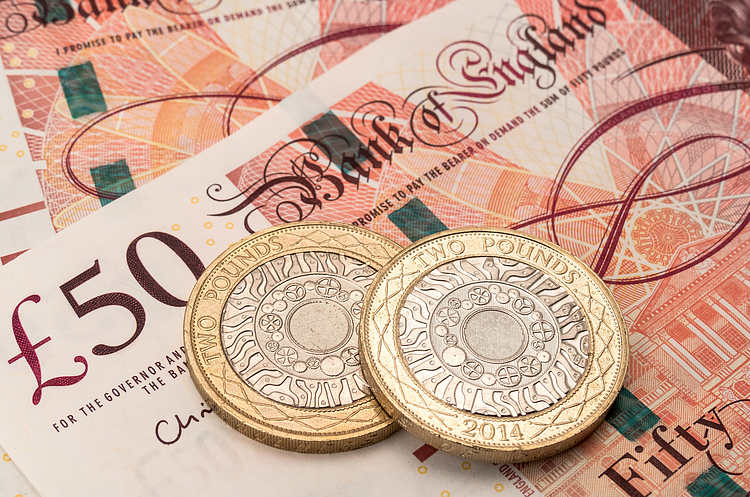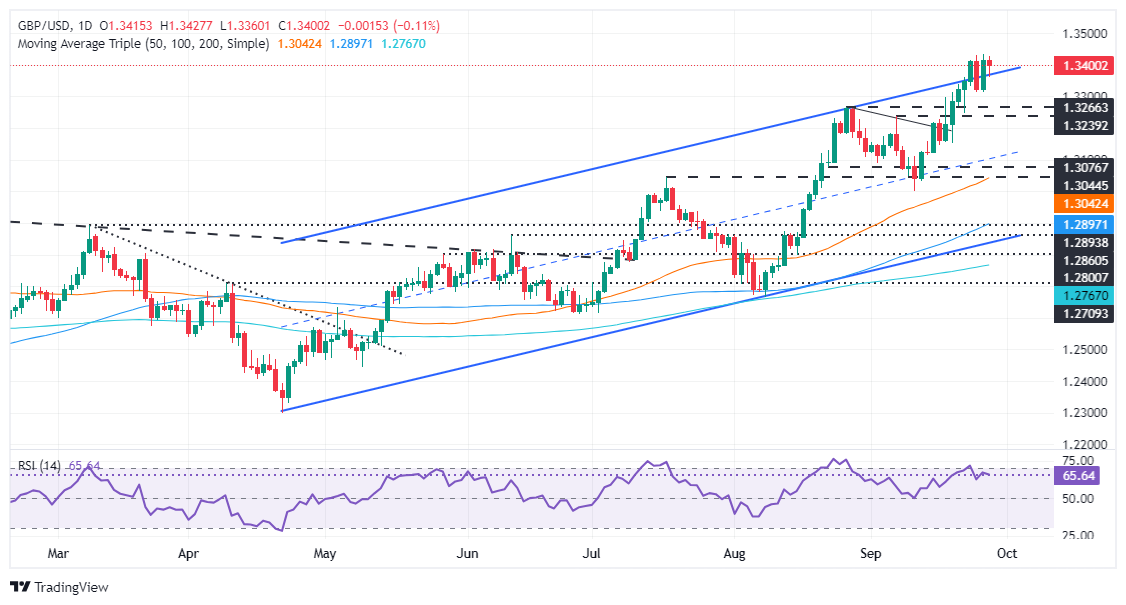
- GBP/USD trades at 1.3403, down 0.08%, close to its two-year peak.
- Momentum fades with potential negative divergence, but a break above 1.3437 could target 1.3450 and 1.3500.
- A drop below 1.3312 could see further declines toward the September 23 low of 1.3248.
The Pound Sterling registered minuscule losses against the Greenback, yet it remains close to two-year peak levels on Friday. The US Bureau of Economic Analysis revealed that inflation is about to hit the Fed’s 2% target. At the time of writing, the GBP/USD trades at 1.3403, down 0.08%.
GBP/USD Price Forecast: Technical outlook
The pair is upward biased, though the trend has lost some steam as buyers failed to push the GBP/USD to a new record high in 2024.
As price action continues to edge higher, momentum has faded. The Relative Strength Index (RSI) continues to edge lower, while spot prices are aimed higher. Hence, a negative divergence might be forming, but sellers must push prices below the top trendline of an ascending channel.
If GBP/USD extends its gains past the March 1, 2022 peak of 1.3437, the next resistance would be 1.3450, followed by 1.3500.
Conversely, if the major drops below the September 25, 26 low of 1.3312, further losses beneath. The next support would be the September 23 low at 1.3248, followed by the 1.3200 figure.
GBP/USD Price Action – Daily Chart
Pound Sterling FAQs
The Pound Sterling (GBP) is the oldest currency in the world (886 AD) and the official currency of the United Kingdom. It is the fourth most traded unit for foreign exchange (FX) in the world, accounting for 12% of all transactions, averaging $630 billion a day, according to 2022 data. Its key trading pairs are GBP/USD, aka ‘Cable’, which accounts for 11% of FX, GBP/JPY, or the ‘Dragon’ as it is known by traders (3%), and EUR/GBP (2%). The Pound Sterling is issued by the Bank of England (BoE).
The single most important factor influencing the value of the Pound Sterling is monetary policy decided by the Bank of England. The BoE bases its decisions on whether it has achieved its primary goal of “price stability” – a steady inflation rate of around 2%. Its primary tool for achieving this is the adjustment of interest rates. When inflation is too high, the BoE will try to rein it in by raising interest rates, making it more expensive for people and businesses to access credit. This is generally positive for GBP, as higher interest rates make the UK a more attractive place for global investors to park their money. When inflation falls too low it is a sign economic growth is slowing. In this scenario, the BoE will consider lowering interest rates to cheapen credit so businesses will borrow more to invest in growth-generating projects.
Data releases gauge the health of the economy and can impact the value of the Pound Sterling. Indicators such as GDP, Manufacturing and Services PMIs, and employment can all influence the direction of the GBP. A strong economy is good for Sterling. Not only does it attract more foreign investment but it may encourage the BoE to put up interest rates, which will directly strengthen GBP. Otherwise, if economic data is weak, the Pound Sterling is likely to fall.
Another significant data release for the Pound Sterling is the Trade Balance. This indicator measures the difference between what a country earns from its exports and what it spends on imports over a given period. If a country produces highly sought-after exports, its currency will benefit purely from the extra demand created from foreign buyers seeking to purchase these goods. Therefore, a positive net Trade Balance strengthens a currency and vice versa for a negative balance.


